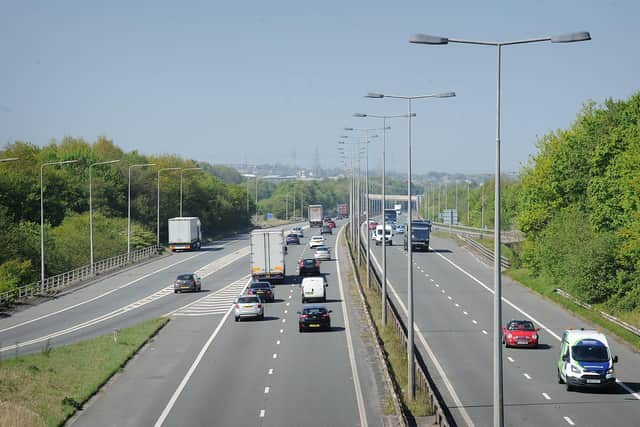Yellow weather warning: Motorists urged to take extra care as high winds set to batter the region
and live on Freeview channel 276
The Met Office has issued yellow warnings for high winds on Friday from 6am to 6pm so National Highways is reminding drivers of the hazards in these conditions. These warnings cover the North East, the North West and Yorkshire and Humber.
National Highways has produced online guidance on its website for handling different weather conditions to keep road users as safe as possible on its motorways and A-roads.


Advertisement
Hide AdAdvertisement
Hide AdIn high winds, there’s a particular risk to lorries, caravans and motorbikes, so drivers should slow down and avoid using exposed sections of road if possible.
Luke Hindle, National Network Manager at National Highways, said: “With the potential for high winds, it is important to plan ahead for your journey, and if weather conditions become challenging, adjust your driving behaviour and take extra care.
“We have a section of our website dedicated to travelling amid storms, high winds and gales, and considerations for different types of vehicle, as part of our guide to travelling in severe weather. It’s also a good idea for people to check their vehicles, such as tyres, coolant and oil levels, before heading out to reduce the risk of breakdowns.”
National Highways uses roadside signs to warn you of possible high winds or side winds. These can be displayed on electronic or fixed roadside signs.
Advertisement
Hide AdAdvertisement
Hide AdSome locations have windsocks located on the roadside. These show you the direction and severity of the wind.
National Highways also monitor the network for debris and use specialist equipment to remove it as quickly as possible. And sometimes during severe weather, for safety certain structures may need to be closed to some or all vehicles. Where possible, signed diversion routes will be in place.
Travelling in strong winds and gales
High winds can blow your vehicle off course or other vehicles into your path. Some vehicles are affected by high winds more than others.
Vulnerable Vehicles
Certain types of vehicles are more prone to the effects of high winds.
Advertisement
Hide AdAdvertisement
Hide AdMotorhomes Vans Transit vans with modifications Vehicles towing trailers or caravans, Motorcycles Tippers Double decker buses Articulated HGVs Abnormal loads Car transporters High-sided rigid HGVs
If your vehicle is susceptible to high-wind conditions, consider delaying your journey until weather conditions improve if you can.
When you’re on the road
Slow down and keep focused on the road ahead – you may encounter debris blown in by the wind
Avoid using exposed sections of road if possible. Lorries, caravans and motorbikes are at particular risk.
Advertisement
Hide AdAdvertisement
Hide AdUse both hands on the steering wheel to keep good control of your vehicle -gusts of wind can cause your vehicle to shake
Look out for gaps in trees or buildings, or when crossing bridges – you’re more likely to encounter side winds here
Keep room on either side of your vehicle to allow for it being blown sideways
Watch out for side winds when passing larger high-sided vehicles – keep room on either side of your vehicle to allow for it being blown sideways
